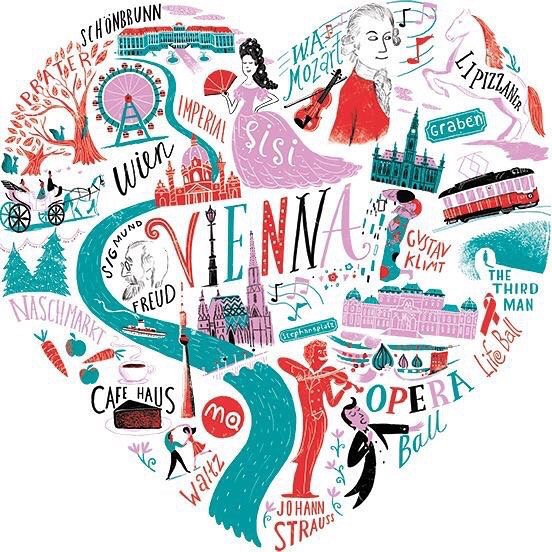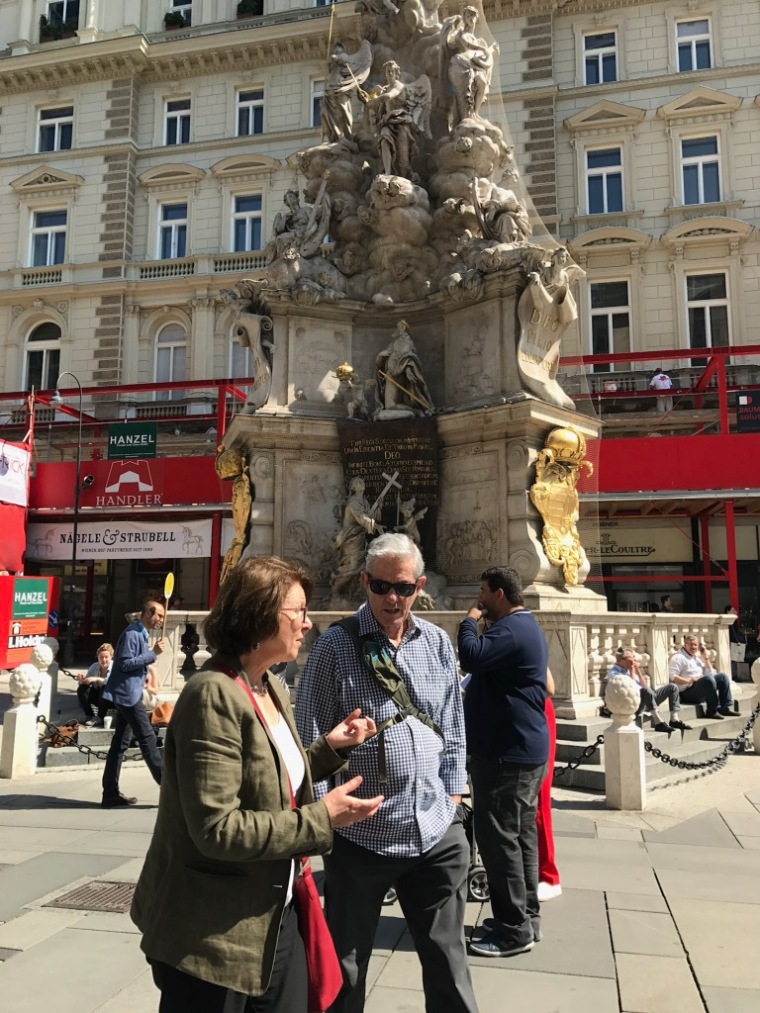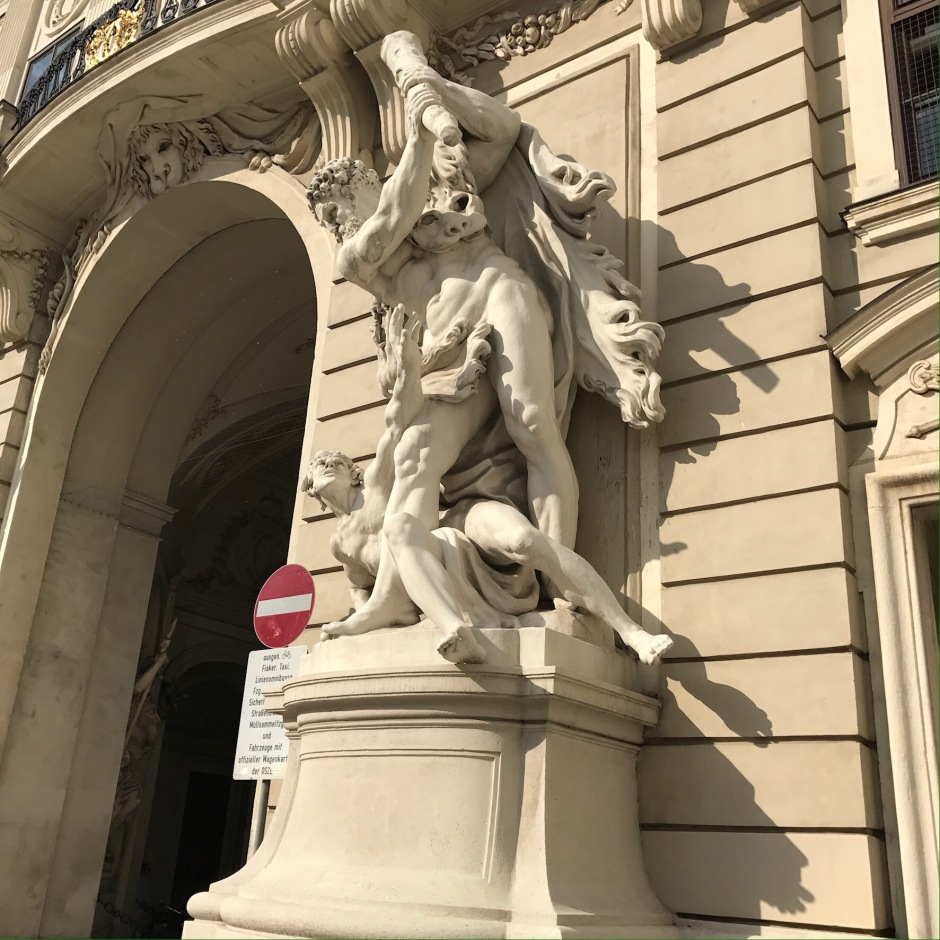Well dear friends and family, we are off once again on another adventure. On this six week trip we will spend our first 4 days in Vienna. We will then take a side trip to Budapest for 4 days, then back to Vienna to pick up a car. Then on to Krems an der Donau, which is along the Danube, then to Bad Ischl, which is in Upper Austria, then back to Vienna for our flight to Paris. An overnight in Paris then the TGV to the Brittany and Loire areas for a month. We will spend our last four days in Paris.
As we are spending a few weeks in Austria, thought I would share a little history of the country. While in Austria we will be spending time in Lower and Upper Austria. On a previous trip, many years ago, we visited the Tyrol and Salzburg provinces.

At its height a century ago, the Austro-Hungarian Empire covered most of central and eastern Europe and was ruled by the House of Habsburg. The 1914 assassination of Archduke Franz Ferdinand resulted in the First World War. The losses of the war resulted in the collapse of the empire. Then German Austria proclaimed itself an independent state. Adolf Hitler annexed Austria in 1938 until 1945. After the Second World War, Vienna was partitioned and governed by four allies (French, Americans, British and Russians) and then in 1955 became an independent sovereign state. They joined the European Union in 1995. Today, Austria is a parliamentary democracy.
A Federal Presidential (head of state) election took place in December 2016. There was controversy in the election as it was found that electoral laws were disregarded in regards to absentee votes. In a run off, Alexander Van der Bellen (Green Party) won over Norbert Hofer from the Austrian Freedom Party, in a very close race. The Freedom Party has seen a resurgence in years. They believe that integration weakens Austria’s “cultural identity”. They attract young people and workers. Sounds familiar with a lot of what is happening in Europe!
The Federal Chancellor (head of government) of Austria is Christian Kern, appointed by the President. Although he is head of governeent, he has no power to direct other members of government.
Austria is made up of 9 independent federal states (Burgenland, Carinthia, Lower Austria, Upper Austria, Salzburg, Styria, Tirol, Vorarlberg and Vienna) with each their own provincial governments. Current population stands at around 8 million and 98% speak German. About 74% of Austrians are Roman Catholic, 5% are Protestant, the rest belong to other faiths.
Austria survived the Euro crisis in much better shape than many other EU countries, maintaining a lower than average unemployment rate. The services sector forms some two thirds of the GDP and trade and industry the remaining third. Agriculture contributes 2%. Austria ranks among the European Communites richest countries. The most important industry is said to be tourism. Exports are vital to the economy. Main exports are machinery and equipment, motor vehicles and parts, paper,metal goods, chemicals, iron and steel, textiles and food stuff. Exports are mainly to Germany.
Famous Austrians…Strauss, Schubert, Mozart, Liszt, Haydn, Mahler (all musicians and composers), Klimt (artist), Lauda(race car driver), Freud and cannot forget to mention…Arnold Schwarzenegger! Needless to say, Austria is well known for its music.
Austria is also known for its outdoors…..as a matter of interest the first line of the national anthem is “Land of mountains, land on the river”.
We arrived in Vienna on Tuesday around 3 p.m., after a three hour layover in Amsterdam. We have rented an apartment in the Spittelberg area which is only a 10 minute walk to the centre of Vienna. Our apartment is in a very old building, but the apartment itself is very lovely, newly renovated, very modern and quiet. We are in the 7th district, central Vienna is the 1st district and located within the Ringstrasse.
I have to share the instructions for access to our apartment. When one has jet lag, they seemed a little confusing…..
“Your keys will be placed in a key box located on the left side of the door to the building outside. The four digit code to the key box is xxxx, your key box is on the right . After entering the code you can open the box and take your keys. Please make sure to close the door of the key box and change the numbers you entered prviousely so no one can open it again. The key set consists of three keys. The yellow key is for the main entrance door. Once you enter the building please go straight ahead until you reach the stairways.you can either take the elevator to floor number 2 or walk to the second floor until you see a sign which says “2 Stock”. On your left side is a white door with number 7 on top. Please open this door with the green key where you can enter a corridor. PLEASE MAKE SURE TO ALWAYS CLOSE THIS DOOR BUT NOT LOCK IT. After you enter the corridor please go to the door with a sign A on it. You can open this door with the remaining key without any color.”
It actually made sense when we were standing in front of the door, but sure raised questions when driving in from the aiport. Yes, we did get into the apartment without any problems!
I get a kick out of the sign in the elevator in our apartment building. It says no more than 5 people at a time…..hard pressed to get a maximum of 3. At least we have an elevator, I am not complaining….. we are on the 4th floor.
Once settled in, we headed out for the centre of Vienna. The major sites of Vienna are within the Ringstrasse. The Ringstrasse ( now a cirular road and tramway street) was previously a wall encircling the city and legend has it that this wall was financed by a ransom paid by the English for the release of King RIchard who was kidnapped en route home from the Crusade by the local duke.
Vienna has a population of 1.8 million people and is by far the largest city in Austria. The next largest city Gras has apopulation of 300,000. Prior to the 1st world war, the population of Vienna was in excess of 2 million.

In our walkabout on our first afternoon here, we came across the Volksgarten (the people’s garden),, which is next to the Imperial Palace, better known as the Hofburg. We entered the Imperial City through the City Gates. This complex was the home to the Habsburgs till 1918. Today the various buildings are museums, stables and performing arena for the Lipizzaner horses. At the other end of the complex is the Burggarten, another green space, which historically were the private gardens for the Habsburgs, but are now public gardens.

Jet lag has set in so we head back to our apartment and eat in. An early night.

On Wednesday morning, I had made arrangements for a walking tour at 9 am with Global Greeters. This organization exists in a lot of major cities and is made up of volunteers who want to show tourists what their city has to offer and share their knowledge of the cities history, culture, food and show you around to tourist sites and some out of the way places.
Well I will say that we were very impressed. Helene met us in front of our apartment.
We spent 3 hours with our guide Helene, a resident of Vienna most of her life. She runs her own marketing research company with her husband, and volunteers with Global Greeters a couple times of month.There is no cost associated with this organization, and although we tried to give her a tip at the end of our walk, she would not take it, she reiterated is was a free tour and she wanted to improve her english, although her english was very good. One can give a donation to Global Greeters.
Vienna is also known for its coffee culture. Our guide Helene, told us that Starbucks had opened numerous coffee shops, but had to close many of them, with the exception of those in the tourist areas, as locals would not frequent them. As we have discovered , the Viennese spend many hours in their chosen coffee house. Not only do they enjoy their coffee, they read their newspapers and enjoy a torte or other type of desert.
All around the city centre, you get approached by young men dressed like Mozart, trying to sell you tickets for Mozart concerts. All the tourist shops are packed with Mozart, Klimt and Empress Maria Theresia paraphernalia.
During our first afternoon in VIenna, we noticed many teenagers well dressed and all walking together. Our guide told us that they were probably coming back from dancing lessons. Helene also said that at least once a year her family attends one of the many balls held in Vienna during the season. Traditional Austrian clothing is normally worn on these occasions.
Helene was so informative.
Helene took out a map of Vienna to get us oriented to the City and where we were about to explore. She explained that the water source that flows through the old city centre is actually the Danube canal. The Danube River is located a bit further out, and would often flood. There was marshland along the river, so the decision was made to dredge this area and widen the river. The soil that was removed during this dredging was piled up in the middle of the river to form an island, “Donau Insel – Danube Island”. Many people flock here during the summer season and many festivals are held on the island.
She also mentioned that 30% of Vienna was destroyed during the second world war.
A little side note, we spoke with Helene about the recent elections. She confirmed that the elections were indeed controversial and the citizens voted on 3 separate occasions last year before the final decision was made.
We started in the Spittelberg Quarter, our apartment is her. She told us that this area was very rundown many years ago and the city was going to demolish the buildings. Luckily they did not. It is now a perfectly preserved enclave of 18th century buildings/apartments that are sought after and therefore very expensive. Wonderful cobblestone streets with many restaurants and narrow alleys. A little away from the main tourist area, so mainly locals in the area.
Then walked through the Museum Quarter(locals refer to this area as MQ). This series of 260 year old buildings house various museums and galleries originally housed over 900 cavalry horses belonging to the Emperor..
Just a few steps from the MQ are two impressive buildings facing one another. The Museum of Fine Art and the Natural History Museum were built during the reign of Emperor Franz Josef in the late 1800’s. Beautiful topiary gardens in front of both buildings. In the centre of the two buildings is a statue of Empress Maria Theresia, including her advisors. Austrians are celebrating her 300th year anniversary this year, so everywhere one sees signs of this event.
It is said that the Empress was a force to be reckon with. She ruled for 40 years (1740 – 1765) and was the only female ruler of the Habsburg’s dynasty. She had 16 children of which 10 survived into adulthood. She was a devout catholic and ruled with counsel from her advisors. She was instrumental in strengthening Austria’s international standing. She introduced many financial and educational reforms.
We continue our walk through the gates leading to the Imperial City and further to central Vienna. The street leading from the Hofburg, is called Kohlmarkt which refers to the days that coal was sold in this location. Today it is lined with high end shops. One shop of note that we entered was Demel, VIenna’s best known pastry shop. It was established in 1786. Amazing pastries, but we did not indulge. The window displays area creations made of sugar. Helene tells us that these displays change with the seasons or holidays.
We find ourselves on the main pedestrian area, the Stephenplatz. In the centre is the Stephansdom Cathedral, dating back to the 12th century. As many churches in Europe it was constructed over several hundred years and styles range from Romanesque to Gothic. Cleaning of the facade is ongoing.

Peterskirche, a Baroque style church is incredibly ornate, constructed in the early 1700’s.

Helene told us that all Emperor’s and Empresses from the 16th century on, had followed the practice of having their hearts buried at St. Augustine’s, their bodies at the Imperial Crypt and their inner organs at St. Stephen’s. The only exception was Franz Joseph.
A few steps from this church is the Pestsaule or Plague Column. Helene told us that we will see these all over Europe. They are reminders of the plague and represent thanks to God for delivering people from the plague. The top figures are the Holy Trinity and further down statues of the saints that people prayed to during this period.

We then visited a monument in remembrance of WW11. It is built on a site where 300 people were killed during the bombing. They had sought refuge in the basement of their building, but unfortunately it collapsed on top of them and they all died. Next to this is a statue of an old Jewish man on his knees being made to scrub the streets just prior to WW11. A string of barb wire is on top of him. Very moving. Further in the same square is a stone column commemorating modern Austria and etched on it are the words of “The New Beginning”.

Though a narrow walkway, which brings us to ancient apartment buildings. All stairways are on the outside of the buildings and have been well preserved. Further on we visit a group of buildings owned by the Teutonic Knights. An order similar to the Knights Templar, but not as secretive. They are made up of priests as well as lay people. In this square we peered into a small music hall where Mozart is said to have performed.
We finish our walk with Helene by stopping at her favourite coffee house, Cafe Frauenhuber which has been operating since the late 1700’s. Robin indulged in a sachertorte, a traditional Viennese desert. Helene told Robin that it must be ordered “mit schlag” with whipping cream! It is said that Mozart frequented this coffee shop as his residence was nearby.
While sitting there, I gave Robin some cash to pay for our coffee. An elderly gentleman sitting across from us leaned over to Robin and said “Must be nice to have a lady give you money”. We chatted to him for a few moments, very charming.

We head back to our apartment for a short rest.
In the afternoon we head off and take the underground to Schwedenplatz to catch a tram bus that takes us around the RIngstrasse. During this ride we see the Parliament buildings, the Viennese University and various museums. A diversity of different building styles. Back to our apartment and we head off for dinner. We went to a local restaurant with outdoor seating. Ordered traditional Viennese Schnitzel. Enough to feed several people, so we brought it home for dinner tomorrow night! Nice to be able to sit outside.
One thing that we have noticed over the last two days, is the number of adults who use push scooters, some being electric. Vienna also seems to be a bike friendly city with many bike lanes that are well used.
Vienna – post 2 to follow!



Lovely blog Claire and Robin.Amazing .!
LikeLiked by 1 person
Very interesting and informative, I have been to Austria several times visiting and biking and learned more in your blog than I picked up on those visits. Have fun and keep blogging.
LikeLiked by 1 person
Thanks Ken. I really enjoy writing my blog and glad you are enjoying it. Looks like you and Theresa having a great time as well. Enjoy the remainder of your trip. Looking forward to seeing you both later this summer.
LikeLike
You both look very well and happy!
LikeLike
Extremely informative. Love reading your adventures!
LikeLike